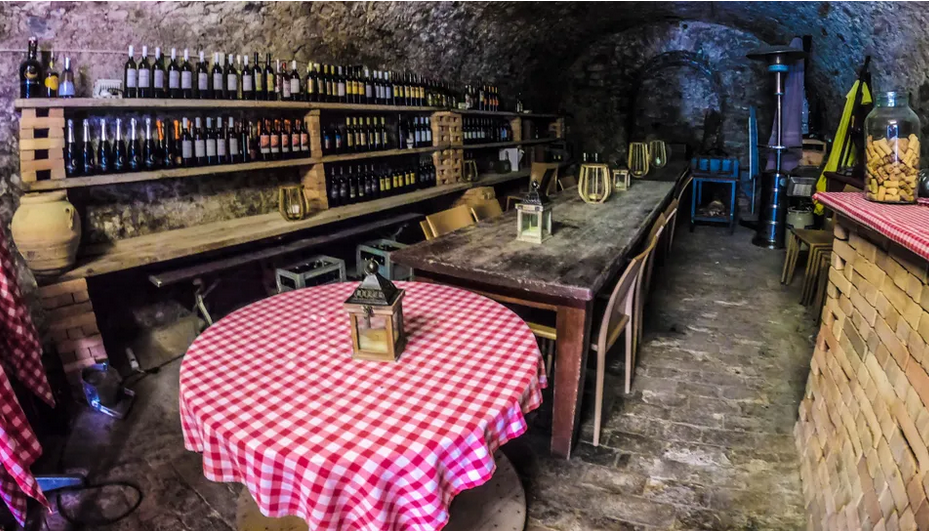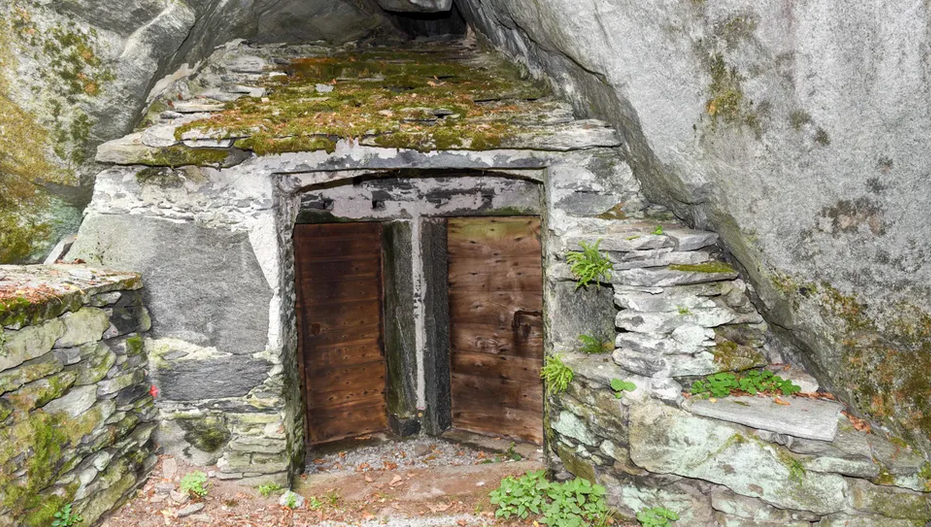Glacial Lake Lugano in Switzerland’s Italian-speaking canton of Ticino features some grottoes lining its shore. These natural caverns represent authentic Ticino and define the lifestyle of its people.
Grotto Descanso is a village tavern housed in a simple stone building with a shaded terrace overlooking the lake. There is a huge wooden door near the main entrance. Inside is a long wooden table covered with a chequered tablecloth and a wall-mounted wine rack loaded with bottles. This is one of the traditional storehouses fashioned out of the natural landscape.
 Mostly dating to the 17th Century, they were originally used as family cellars, preserving wine, salami, cheese, fruit and vegetables. Similar grottos can be found throughout Ticino, and while some remain as private storehouses and others lie unused and abandoned, many, like this one, have been repurposed as cozy watering holes and village taverns.
Mostly dating to the 17th Century, they were originally used as family cellars, preserving wine, salami, cheese, fruit and vegetables. Similar grottos can be found throughout Ticino, and while some remain as private storehouses and others lie unused and abandoned, many, like this one, have been repurposed as cozy watering holes and village taverns.
The Italian word “grotta” means a large natural hollow in rock or the earth, and that’s how these cellars began. In Ticino, landslides once covered vast areas of the Alpine foothills, often creating caverns between the rocks. Living as they did, in often-isolated villages, the Ticinese took advantage of these natural elements to keep their food fresh for longer. The grottoes enabled many farmers to grow their produce and stock it up.
 The reason grottoes work so well as natural fridges is due to their excellent ventilation. Since they usually occurred on rockfall or on an accumulation of scree, they have a porous foundation that guarantees internal air circulation and results in a year-round stable temperature that’s ideal for ageing wine. (Some grottoes have a mere 1C temperature difference between summer and winter.)
The reason grottoes work so well as natural fridges is due to their excellent ventilation. Since they usually occurred on rockfall or on an accumulation of scree, they have a porous foundation that guarantees internal air circulation and results in a year-round stable temperature that’s ideal for ageing wine. (Some grottoes have a mere 1C temperature difference between summer and winter.)
Hundreds of years ago, some goats were found poking their heads inside the holes in the cave walls. Soon, the farmers realized that they were doing so to feel the cold air blowing through the walls’ holes. That’s when they were struck with the idea of using caves as natural refrigerators to store cheese, meat and even milk awaiting processing.
Whenever supplies dwindled at home, the men went off to the grotto to fetch more. In their leisure time, usually at the height of summer before harvesting started, they would sit in front of the grotto, enjoying the cool air flowing out, eating salami and swapping anecdotes or sharing their troubles over a glass of wine.
Hours would go by before the children were sent to fetch their fathers home. Soon the women started to join them, until the grottoes became a place for people to mingle, eat together and sing.
Over time, the Ticinese started expanding the caves, creating simple architectural solutions that skillfully incorporated the natural resources. If there was a large opening to the cave, for example, some people added a door at the entrance or carved out extra rooms. If the cavern was only accessible via a small hole in the rockfall, families might build an entire house over the top, using the airflow from the cavern below to keep the internal temperature of the home constant.
Inside rock caves, they built cellars with arched ceilings. If there wasn’t enough room for all the supplies, the caverns would be hollowed out a bit more or small stone structures would be built in front of the entrance.
 Eventually, many of these rustic storehouses, often sitting at the forest limits or on the banks of lakes or rivers, transformed into atmospheric taverns for the public to enjoy regional specialties and conversations in a laid-back, welcoming environment.
Eventually, many of these rustic storehouses, often sitting at the forest limits or on the banks of lakes or rivers, transformed into atmospheric taverns for the public to enjoy regional specialties and conversations in a laid-back, welcoming environment.
For many locals, snacking on piquant Alpine cheese at a grotto while playing cards remains an ideal way to spend a Sunday. Favored by both young and old, these ingenious structures, a blend of natural and human architecture, remain symbols of tradition, culture, conviviality and a sense of home.
You can read the original article at www.bbc.com
